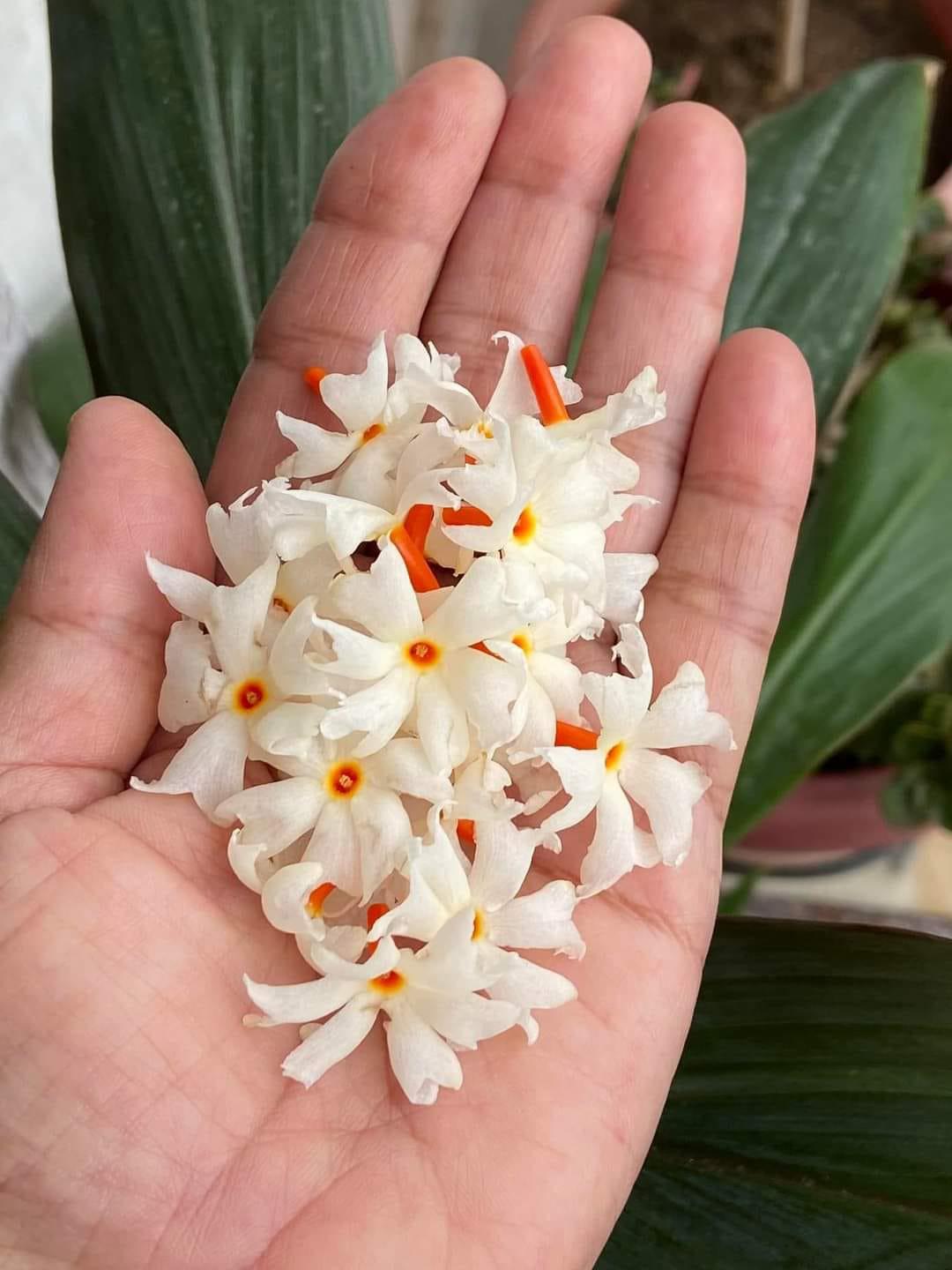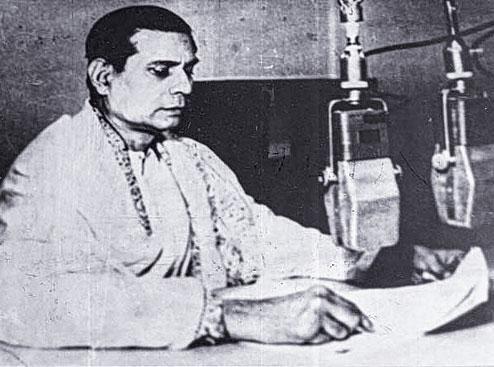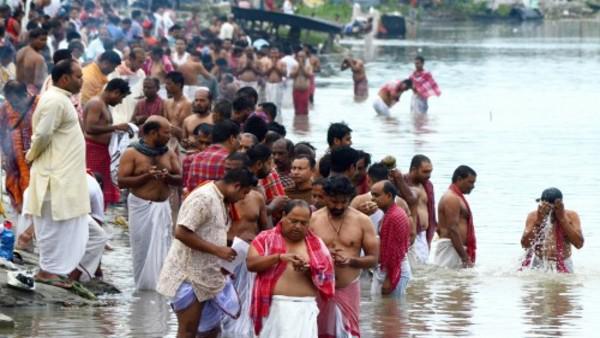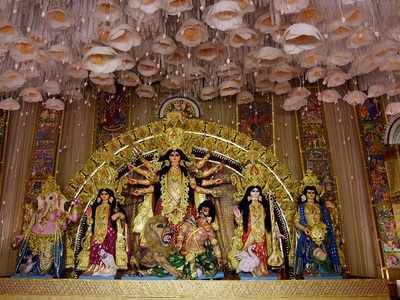The Tradition Of Mahalaya!
‘That it will never come again is what makes life so sweet’: wise words from the poet Emily Dickinson and one which has been playing in my mind ever since the fragrance of the ‘Shiuli’ flower gently invades my senses early in the morning these days of the Autumn season. The beautiful white flower with its flame orange stem blooms at night and in the morning one is greeted with a carpet of shiuli in our driveway. It heralds the advent of the ‘Sharadiya Navaratri’ .

Pujos without our parents, who we have lost, is just not the same for me and my sister. There are so many memories of Mahalaya and Durga Puja but we have learnt to live with our loss. We grieve—we know that’s never going to end. But, we also celebrate the extraordinary people both Ma and Daddy were and the extraordinary lives they led. Life continues and pujos now are filled with remembering them, honoring them, loving them while we carry out the little and great traditions, that we learned from them, of this beautiful, iridescent and powerful festival.
Every festival of India is inextricably woven with nature. It's said that on the day of Mahalaya, which is the beginning of "Devipaksha",the devas & ordinary mortals wake up to welcome Goddess Durga to Earth as she steps down from Kailash Parvat with her divine powers. During this time, one sees tears of happiness and faces redolent with longing as every person in Eastern India proclaim joyfully ‘Ma Asche’.

The magnificence of this Autumn season and the swaying kash phool was brilliantly captured by renowned film director Satyajit Ray in his movie “Pather Panchali”. 'Ashwiner sharodo praatey…Beje utheche aloko monjir’. The cinematic impact of the famous train scene which made the beauty of the kash phool come alive and hold its own against the backdrop of the black smoke billowing from the hurtling train is talked about reverentially. To me, possibly like many, the interpretation is that of the continuity and power of both tradition and nature as it simultaneously encompasses within its folds great change. The Kaash Phool is a type of grass that grows during sarat kaal and is mainly found along the banks of the rivers. The flower embodies ‘Shakti’ with their intense desire to live and to continue living to the fullest. They grow again and again. Neither rain nor drought nor sunshine gets them dry with nature invoking its power.
But the essence of Mahalaya morning lies in the mesmerizing baritone voice of Birendra Krishna Bhadra, as he recites the sacred shlokas welcoming the Goddess Durga's arrival on earth. Mahisasurmardini describes the epic battle of goddess Durga with the demon king Mahishashura. As the recital begins, the serene morning air resonates with the long drawn sound of the sacred conch shell, followed by a tune in Raga Malkauns, which ultimately leads to the start of the programme with the prayer to Goddess Chandi "Ya Devi Sarvabhuteshu' epitomising a divine start to the Durga Puja festivities.

The script of this program was written by Bani Kumar and the music was directed by Pankaj Kumar Mallik and was recited by Birendra krishna Bhadra. It was first broadcast on the Mahalaya of 1931. Since then, All India Radio has broadcast this programme on the Mahalaya of every year. However, In the year 1976,Uttam Kumar replaced Birendra Krishna Bhadra's voice as part of a historic decision taken by Akashvani radio & the program was renamed 'Durgathaharini'. But the change proved so unpopular,that it was shifted back to the original version of Birendra Krishna Bhadra's 'Mahisasurmardini'. This programme is aired every year at 4am,day-break on Mahalaya with it's popularity remaining undiminished even today and thousands of people across the globe listen to the sonorous rendition of "Mahisasurmardini"at 4AM on Mahalaya.
As a child i have fond memories of Daddy waking up hurriedly at 4AM and tuning the radio to listen to Bhadra's legendary composition. Then he would wake us up with his famous Oriya proverb "utha utha pile matha nakara au"(get up quickly kids, don’t be lazy). But much before we all woke up, my paternal grandfather would religiously start his recital of Chandi Paath at 3AM i.e during the ‘Brahmamuhurta’. After the morning shaligram puja was over, he would do the 'tarpan' remembering our ancestors with gratitude and helped by my grandmother, he would quietly lay out the 'bhojya' on 3 banana leaves: one for the paternal side, then for the maternal ancestors and another for all the unknown souls.True homage comes from the heart as well as from the lips, and shows itself in deeds.

I remember him explaining the essence of Mahalaya to us. That joy and sorrow are two sides of a coin and grief and love similarly are conjoined. Mahalaya is both a day of remembrance with gratitude to our ancestors and also joyfully welcoming the Divine Goddess to come into our hearts and home. His gentle voice would fill our hearts with a deep peace and connect with the Divine.

How quickly time passes.Today, when so much of our lives have changed, and we as people in a smart society are struggling to have complementary relationships in nuclear families,I am thankful to those memories of my childhood where we grew up with an extended family bound together by traditions.Pitrupaksha will soon be over & Durga Puja will be upon us.
As Thomas Hardy said "Time changes everything except something within us which is always surprised by change" & forgetting that we will all be stories in the end.
Comments (9)








